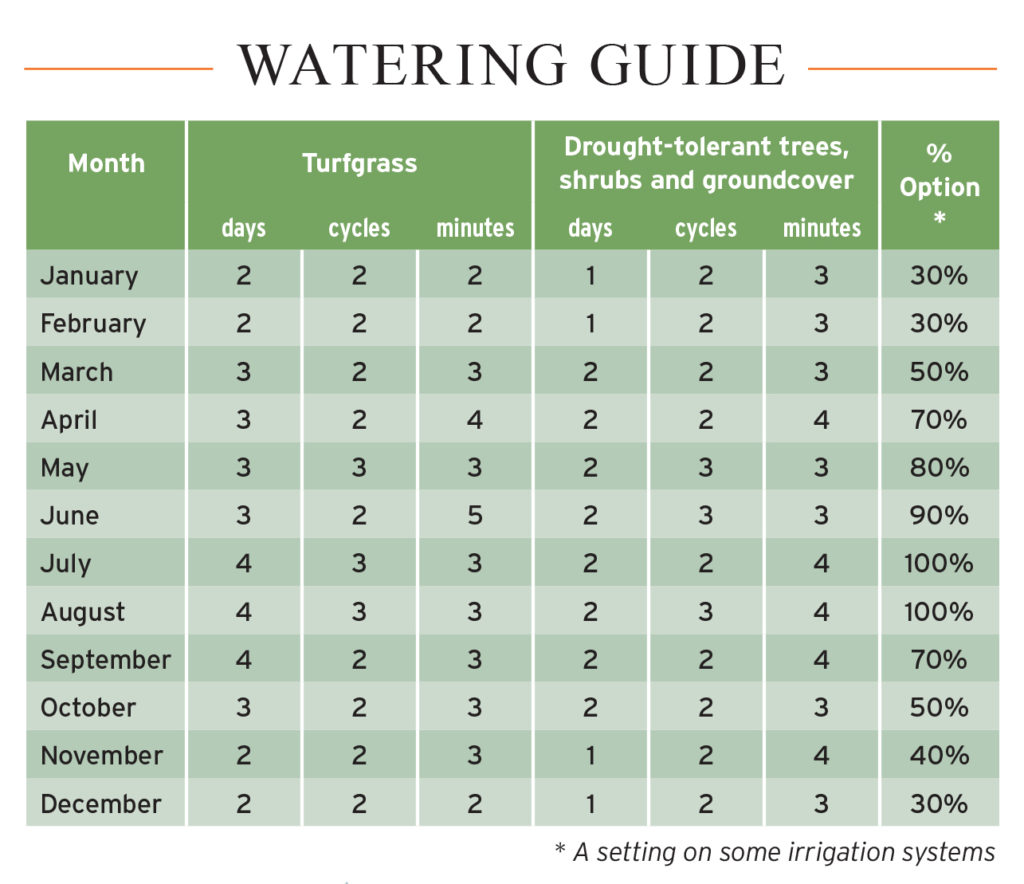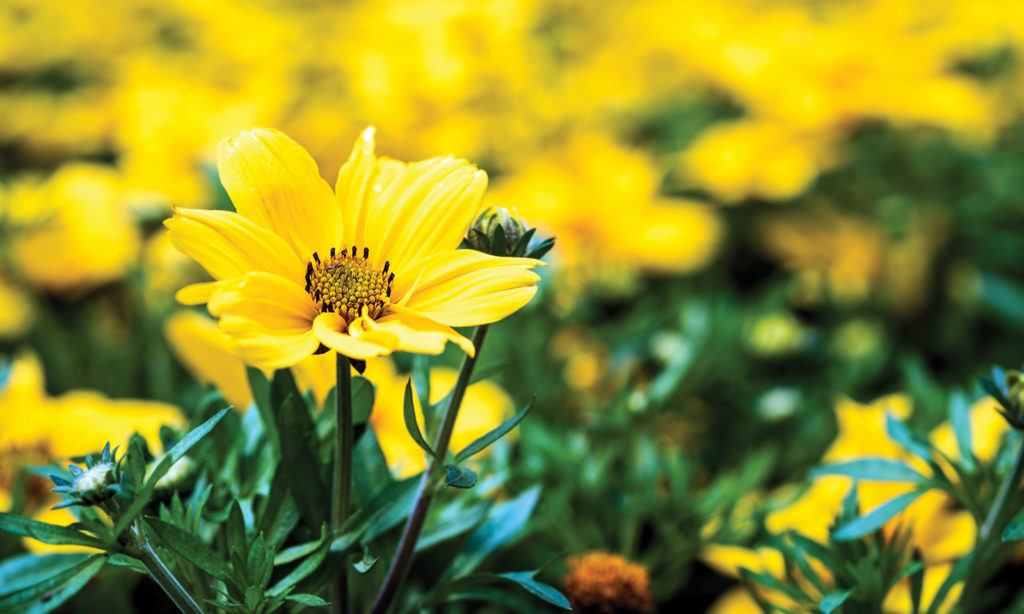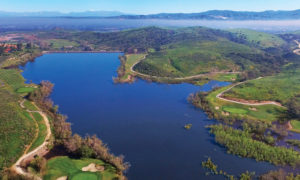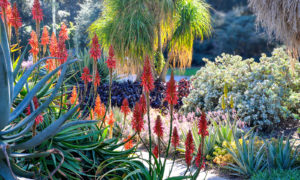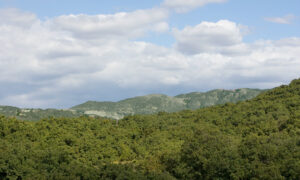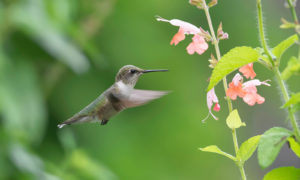It’s hard to believe that summer is nearly over, but don’t let the September heat fool you about your garden.
The season’s hot, dry Santa Ana winds frequently send people turning up the dial on their irrigation cycles, thinking, “If I’m thirsty, my lawn must be, too.”
That’s the wrong approach to watering in the fall, and here’s why.
As the days grow shorter, plants start to go dormant, and they don’t need as much water. This is when their biological processes slow down. In fact, many deciduous plants will start to lose their leaves at this time of year.
What does that mean for your irrigation schedule?
September is the time to start turning down the dial and water less than you did in August – by 30%.
For the most effective watering schedule, we recommend multiple irrigation cycles of shorter periods to allow the water to soak in and penetrate the roots of your plants. For turfgrass, you might run three 3-minute cycles four days a week in August but only two 3-minute cycles in September.
And remember, just because your early summer flowers are finishing up, it doesn’t mean you can’t plant some fall favorites to beautify your yard through Thanksgiving.
Apart from the time of year, how much you water depends on the type of plant and whether it is located in full or partial sun.
Check out the watering guide below or visit wateringguide.com for more details.
Juan Garcia is Irvine Ranch Water District’s water-efficiency specialist. You can learn more about the district’s water conservation programs, gardening tips, workshops and rebates at
rightscapenow.com.
